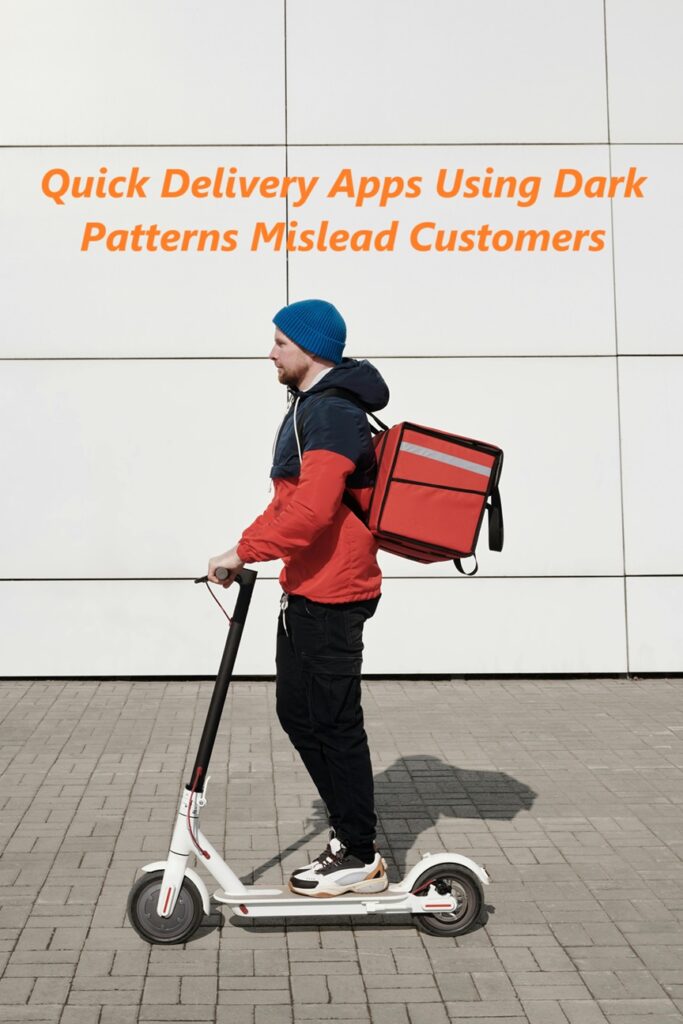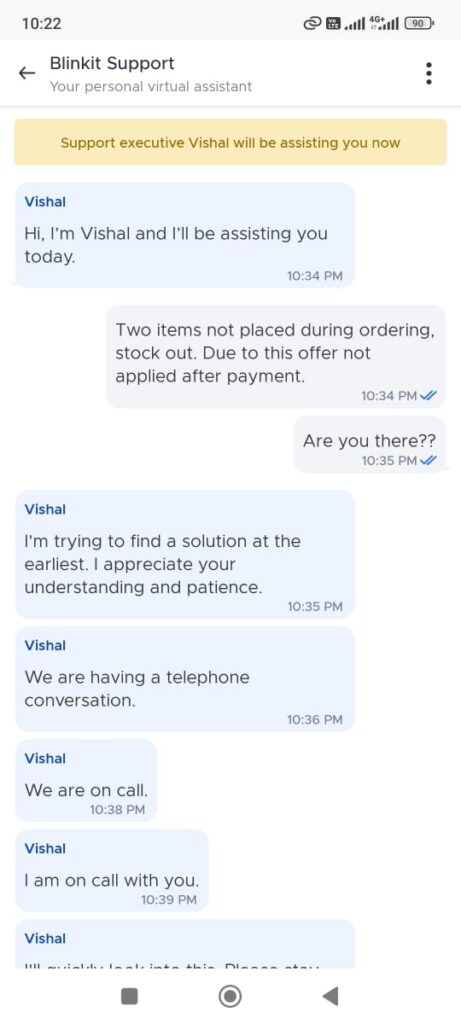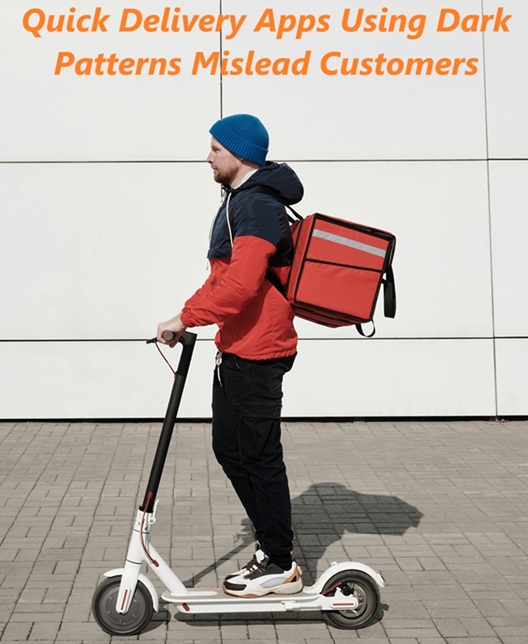Dark Patterns Usage by Quick Delivery Apps & Online Cab Aggregators

In today’s fast-paced world, convenience is king. Quick grocery delivery apps and online cab aggregators have become essential services for millions of people worldwide. With just a few taps on your phone, you can have your groceries delivered or a cab waiting at your doorstep. However, while these services promise ease and efficiency, they often employ questionable tactics known as “dark patterns” to manipulate users and maximize profits.
Dark patterns are deceptive design techniques that trick users into making decisions they might not otherwise make. These can include hidden fees, confusing interfaces, and manipulative notifications. Over the years, user complaints have flooded social media and consumer forums, shedding light on how these companies exploit unsuspecting customers. From surge pricing tricks to auto-renewing subscriptions, these dark patterns not only tarnish the reputation of such platforms but also raise questions about their ethical practices.
What Are Dark Patterns?
Dark patterns are not accidental. Coined by Harry Brignull in 2010, the term refers to deliberate design choices that confuse or mislead users. These deceptive tactics are aimed at increasing sales, retaining customers, or simply making it harder for them to leave the platform.
Common examples of dark patterns include:
Hidden Charges: Costs that appear only at the final checkout stage.
Forced Continuity: Automatic subscription renewals without explicit consent.
False Scarcity: Notifications like “only 1 item left” to rush decisions.
Bait and Switch: Promising one thing but delivering another.
For quick grocery delivery apps and cab aggregators, these patterns often translate into:
Inflated fees masked as convenience charges.
Pushy upselling of premium services.
Confusing interfaces that mislead users into making unintended purchases.
While these tactics might boost short-term profits, they erode consumer trust in the long run.

Dark Patterns in Quick Grocery Delivery Apps
Grocery delivery apps like Zepto, Blinkit, Instacart, Big-Basket and others have gained popularity for their ability to deliver essentials within minutes. However, beneath the surface of convenience lies a web of manipulative practices designed to extract more money from users.
Examples of Manipulation Tactics
Inflated Delivery Fees:
Many users report that delivery fees spike after they’ve added items to their cart. For instance, a delivery fee displayed as ₹20 suddenly becomes ₹40 during checkout, with no explanation provided.
Misleading Discounts:
Apps often advertise discounts like “Flat ₹100 off,” but these deals are tied to specific conditions buried in fine print, such as a minimum order value of ₹1,000.
Automatic Item Additions:
Some apps sneak additional items into the cart, like sachets of seasoning or reusable bags, without clear consent. Customers only notice these charges after paying.
Confusing Subscription Models:

Quick delivery apps often push premium memberships like “Instacart Express” or “Blinkit Prime,” highlighting benefits while downplaying renewal terms.
Recent Complaints by Users
In one widely shared case, an Indian user ordered groceries through a popular app. Despite selecting the “No substitutes” option for out-of-stock items, they received replacements and were charged extra without their approval.
Another user on Reddit complained about inflated delivery charges appearing just seconds before checkout.
An user complaint about that same product price different on Android Vs Apple phone , higher pricing on Apple than Android.
Another user complaint that offer of getting movie voucher on minimum purchase of INR 999 ,showing while ordering but after payment the few items stock out and order value reduced and offer removed due to minimum purchase goes down by INR 999/-
These complaints highlight how grocery apps use urgency and ambiguity to exploit users’ trust.
Dark Patterns in Online Cab Aggregators
Online cab services like Uber, Lyft, and Ola have revolutionized urban transportation. However, their reliance on dark patterns to manipulate fares and conditions is a growing concern.
Common Tactics

Surge Pricing Ambiguities:
Surge pricing, though justified by supply-demand dynamics, is often unclear. Users report seeing “5x surge” notifications without understanding how much extra they’ll be charged.
Hidden Cancellation Fees:
Many users have been caught off guard by cancellation fees that were not clearly mentioned during booking.
Longer Routes:
Some drivers intentionally take longer routes, exploiting app algorithms to charge higher fares.
Add-on Services:
Options like “Ride Priority” are often highlighted during booking, making users feel they must pay extra to secure a ride.
Real-Life Complaints
A 2024 case in New York saw a user charged $60 for a 10-minute ride due to an unanticipated surge fee. In India, an Ola user reported being charged a cancellation fee despite the driver refusing to pick them up. Social media platforms are rife with similar grievances, with hashtags like #CabScam trending periodically.
These incidents highlight how cab aggregators prioritize profits over transparency.
Why These Patterns Persist
The persistence of dark patterns is rooted in business priorities. Companies argue that these practices are necessary to maintain profitability in highly competitive markets. Additionally, regulatory oversight in many countries is either lax or non-existent when it comes to digital consumer rights.
Platforms often justify surge pricing and hidden fees as part of their operational model. However, this approach fails to account for the growing discontent among users. Instead of addressing these concerns, companies often issue vague statements or implement superficial fixes.
Until stricter regulations are enforced, these dark patterns are likely to persist, leaving consumers vulnerable.
Consumer Stories and Complaints
The impact of dark patterns becomes evident when examining consumer experiences. For instance:
Grocery Apps: A user on Twitter shared screenshots of a grocery app charging a “service fee” twice for a single order. Despite multiple complaints, the issue remained unresolved.
Cab Aggregators: In the UK, a user booked a cab advertised at £15 but ended up paying £30 due to unclear surcharge notifications.
Global Impact: In the US, Instacart faced backlash when users discovered that tips for delivery workers were being diverted to cover service fees.
These stories not only expose unethical practices but also underscore the need for greater accountability from companies.
Steps to Protect Yourself as a Consumer

As consumers, staying vigilant can help minimize the risks of falling prey to dark patterns. Here are some tips:
Scrutinize Every Transaction: Check your cart and payment summary for unexpected charges before completing the purchase.
Read the Fine Print: Pay close attention to subscription terms and cancellation policies.
Report Suspicious Practices: Use consumer forums, social media, or official complaint channels to raise awareness about deceptive practices.
Leverage Technology: Use tools like browser extensions to track hidden fees or compare prices across platforms.
By adopting these practices, consumers can regain control over their spending and demand better transparency from companies.
Conclusion
The rise of quick grocery delivery apps and online cab aggregators has transformed how we live and shop. However, the reliance on dark patterns to maximize profits has led to widespread mistrust. These deceptive practices, from hidden fees to manipulative notifications, not only hurt consumers but also damage the credibility of these platforms.
Stricter regulations and greater consumer awareness are essential to curb such unethical behavior. While these companies may argue that dark patterns are a necessary part of their business model, the long-term cost of eroding trust far outweighs the short-term gains.
Disclaimer
This blog is intended for informational purposes only and does not aim to defame or target any specific brand or company. The examples and cases discussed are based on publicly available information and user complaints, as shared on social media, forums, and news outlets.
The intent is to highlight common challenges faced by consumers and encourage more transparent practices across the industry. Readers are encouraged to exercise caution and verify claims independently before making decisions based on this blog.

